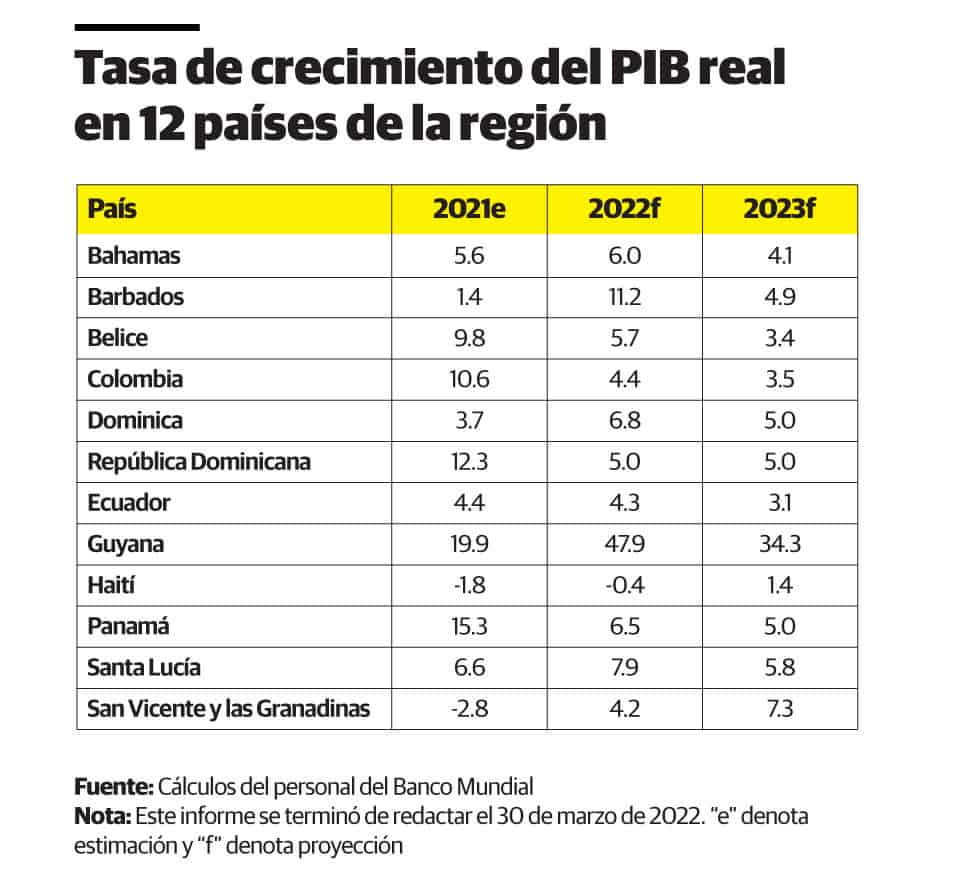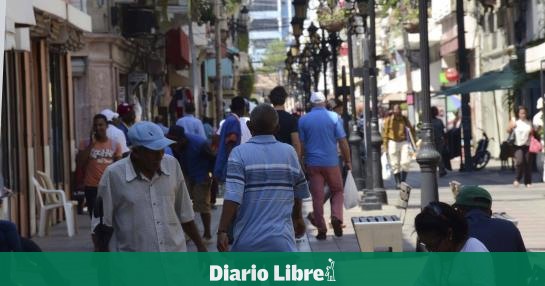As recently indicated by the Dominican economic authorities, the world Bank It also projects that the country will grow 5% in this 2022 and also in the next year, a percentage lower than the 12.3% estimated in 2021, influenced by the uncertainty in the international context caused by the war between Russia and Ukraine and the COVID-19 pandemic. 19.
With the projection, the country would be the eighth economy with the highest growth in the region, only surpassed by Guyana, Barbados, Saint Lucia, Dominica, Panama, Bahamas and Belize. For Haiti, on the other hand, a decrease of -0.4% is projected, being the worst projection for the 28 countries listed.
“The Dominican Republic has performed quite well in the last year,” said William Maloney, chief economist for Latin America and the Caribbean at the world Bankwhen answering a question Free Journal during yesterday’s presentation of the institution’s semi-annual report on the state of the economy in the region.
“Like all the Caribbean countries, they lost 7 percent during the crisis, and as an economy highly exposed to tourism, as an industry, they were in the same danger of losing a lot of growth last year, but they made a very good effort in terms of vaccination, so they grew 12 percent last year, well above the Caribbean average,” he said.

In documents released separately, both the Central Bank and the Ministry of Economy, Planning and Development projected that the gross domestic product (GDP) of Dominican Republic grow 5% this yearwhen in January the financial institution had projected a growth of the economy around 5.5-6.0%.
According to the semi-annual report “Consolidating the recovery: taking advantage of the opportunities of green growth”, the world Bank indicates that the economies of Latin America and the Caribbean are on the way to recovery after the crisis generated by the COVID-19 pandemic, “although the aftermath of the pandemic persists and the need for dynamic, inclusive and sustainable growth is increasingly urgent”.
The multilateral organization highlights that after a rebound of 6.9% in 2021, the region’s GDP is expected to grow 2.3% this year and an additional 2.2% in 2023, with most countries managing to reverse the GDP losses that took place during the pandemic crisis.
“However, these modest projections place regional growth among the lowest in the world at a time when the region faces great uncertainties, such as the possible appearance of new variants of the coronavirus, an increase in inflationary pressure and the war in Europe, that threatens the global recovery. In fact, the regional growth forecast was revised downwards by 0.4 percent after the Russian invasion of Ukraine. world Bank.
“The (expected) growth is not enough to help alleviate poverty levels in the region, and it is also a return to the growth rates of the 2010s, when Latin America and the Caribbean grew below the rest of the world” Malone said.
As a positive, world Bank highlights the vaccination process against COVID-19, which has become widespread in the region, and that companies are hiring again and schools are reopening their doors. “However, the long-term consequences of the crisis persist and need attention,” she says.
The report of world Bank it also reiterates that climate change poses significant challenges for the economies of the region.
It warns that extreme weather events, such as cyclones and floods, will affect transportation networks: 60% of the network in Jamaica, 50% in Haiti, 35% in the Dominican Republic and 25% in Bolivia are vulnerable.
It estimates that the total cost of all these infrastructure shocks—energy, transportation, and water—as a percentage of GDP is almost 1% per year in most countries, although it could be as high as 2% in the Dominican Republic and 3% In Panama.
“These figures are important when compared to the average annual investment in infrastructure, which is approximately 1.5 percent of GDP,” he says.








